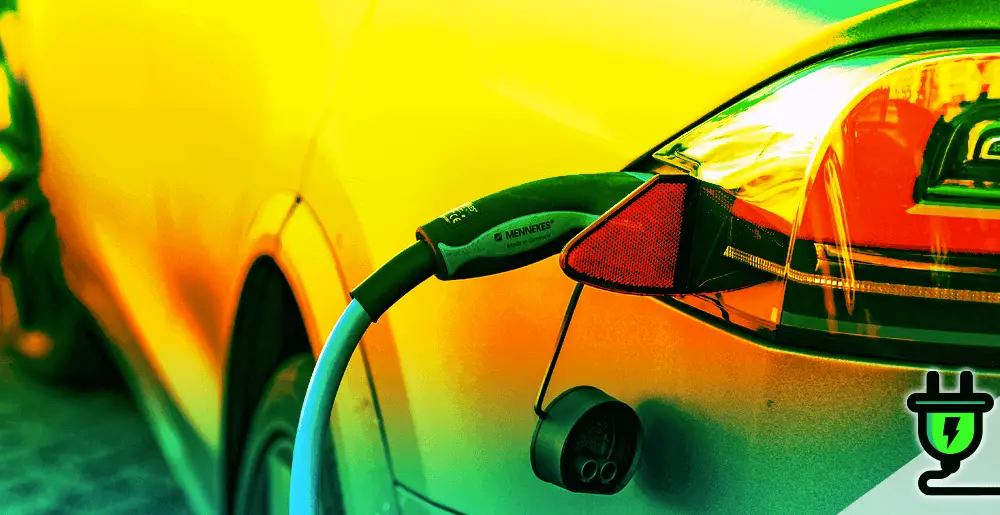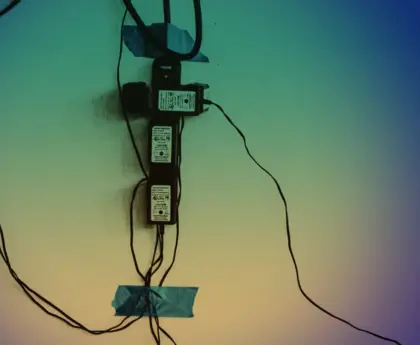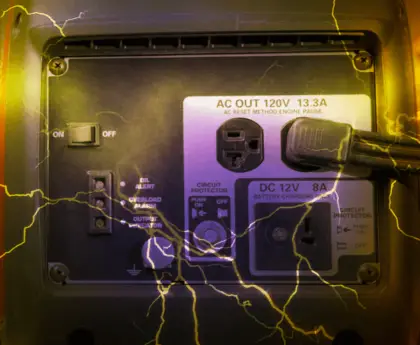Are you considering going green by charging your Tesla with solar energy but unsure how many panels it will require? The average American distance driven annually can greatly affect the number of solar panels needed.
Approximately 8 to 10 solar panels are needed to charge a Tesla. However, this is a general estimate, and the actual number can vary based on the efficiency of the solar panels, the specific Tesla model, and the power output of the connection in use.
In this guide, we’ll explain factors like energy consumption and panel efficiency that determine this number, as well as guide you through a simple calculation process to estimate it yourself.
Ready to step into the future of sustainable driving and discover how many solar panels to charge a Tesla? Let’s get started!
Factors to Consider for Charging a Tesla with Solar Panels
When determining the number of solar panels needed to charge a Tesla, factors such as the energy consumption of the vehicle, efficiency of the solar panels, and sunlight availability and panel orientation must be taken into account.
Energy Consumption of the Tesla
Tesla vehicles consume energy at a rate that varies based on the model and driving conditions. For instance, a Tesla Model 3 uses approximately 18.1kWh for every 62.13 miles driven.
This factor is central to determining how many solar panels are needed for charging the vehicle. The higher the energy consumption of your Tesla, the more solar power you’ll need to keep it charged and running smoothly.
It’s worth noting that utilizing solar energy for powering your car could be an effective way to reduce costs and contribute positively towards environmental protection efforts.
Efficiency of the Solar Panels
Solar panel efficiency plays a crucial role in determining the number of panels needed to charge a Tesla. The more efficient the panels are at converting sunlight into electricity, the fewer panels are required to generate enough power.
Higher efficiency also means that you can maximize your energy production and charge your Tesla faster. So, when considering installing solar panels for charging your Tesla, it is important to choose high-efficiency panels to get the most out of your renewable energy source.
The efficiency of solar panels is typically measured as a percentage of how much sunlight they can convert into usable electricity. Modern solar panels have an average efficiency range of 15% to 20%, with some premium models reaching up to 22% or higher.
By selecting highly efficient solar panels, you can optimize their performance and reduce the number of panels needed.on your roof or property. This not only saves space but also allows for greater flexibility in system design and installation options.
Simply put, investing in highly efficient solar panels will ensure that you generate sufficient energy to charge your Tesla while minimizing the number of panel installations required.
Sunlight Availability and Panel Orientation
The amount of sunlight available and the orientation of solar panels play a crucial role in determining how many panels are needed to charge a Tesla. Solar panels require direct sunlight to generate electricity efficiently, so it is important to consider factors such as shading from buildings or trees.
Additionally, the orientation of the panels towards the sun affects their overall efficiency. Panels facing south generally receive the most sunlight throughout the day, maximizing energy production.
Taking into account these factors will help determine the optimal number of solar panels required to effectively charge a Tesla using renewable energy.
Calculation Method for Determining the Number of Solar Panels
To determine the number of solar panels needed to charge a Tesla, several factors must be considered, including the total energy consumption of the Tesla, the efficiency and output of the solar panels, and the availability of sunlight and panel orientation.
Total Energy Consumption of the Tesla
The total energy consumption of a Tesla vehicle is an important factor to consider when determining the number of solar panels needed for charging. On average, a Tesla Model 3 uses around 18.1 kilowatt-hours (kWh) per 62.13 miles driven.
This means that to fully charge the battery, you would need an average of 8 solar panels, each with a capacity of 400 watts. By understanding and estimating the energy consumption of your Tesla, you can ensure that you have enough solar panels to meet your charging needs efficiently and sustainably.
Solar Panel Efficiency and Output
Solar panel efficiency refers to the ability of solar panels to convert sunlight into usable electricity. It is an important factor to consider when determining the number of panels needed to charge a Tesla.
Higher efficiency panels can generate more electricity from the same amount of sunlight, reducing the overall number of panels required. On average, solar panels have an efficiency range of 15% to 20%.
Additionally, the output of solar panels depends on factors such as their size and wattage rating. Panels with higher wattage ratings produce more power, which means fewer panels are needed for charging a Tesla.
Hours of Sunshine and Average Daily Energy Production
The hours of sunshine and average daily energy production play a crucial role in determining the number of solar panels needed to charge a Tesla. The amount of sunlight received directly affects the efficiency and output of the solar panels.
Generally, more sunlight means higher energy production, which can reduce the number of panels required. Additionally, considering the average daily energy production helps determine if enough energy can be generated to fully charge the Tesla on a regular basis.
By maximizing the use of available sunlight and estimating daily energy production, we can calculate how many solar panels are needed for efficient charging.
Example Calculation for Charging a Tesla with Solar Panels
See how we determine the estimated number of solar panels needed to charge a Tesla, step-by-step. Don’t miss out on this informative calculation process!
Assumptions and Variables Used
The calculation for determining the number of solar panels needed to charge a Tesla takes into account various assumptions and variables. These include the energy consumption of the Tesla, the efficiency of the solar panels, and the availability of sunlight as well as panel orientation.
It also considers factors such as battery storage capacity, grid connectivity, and backup charging options. The cost analysis and return on investment are considered when deciding on the size and number of solar panels required.
By considering these assumptions and variables, it is possible to estimate how many solar panels are needed to efficiently charge a Tesla using clean and sustainable solar power.
Step-by-Step Calculation Process
To determine the number of solar panels needed to charge a Tesla, follow these step-by-step calculations. First, consider the total energy consumption of the vehicle. For example, if a Tesla uses 18.1kWh per 62.13 miles driven, calculate how much energy is needed for your daily mileage.
Next, take into account the efficiency and output of the solar panels you plan to install. Solar panel systems typically have an efficiency rating which determines how much electricity they can generate from sunlight.
Multiply this percentage by the wattage of each panel to find their actual output.
Then, factor in the average hours of sunshine and daily energy production in your location. This information will help estimate how much energy your solar panels can produce on a daily basis.
Estimated Number of Solar Panels Needed
To determine the estimated number of solar panels needed to charge a Tesla, several factors come into play. The energy consumption of the Tesla, along with the efficiency of the solar panels and the amount of sunlight available, all impact this calculation.
On average, it takes around 5 to 15 solar panels to charge a Tesla vehicle. For example, a Tesla Model 3 battery can be charged using approximately 5 solar panels to achieve a range of 40 miles.
Another estimate suggests that a PV system requiring 6 x 400W panels is sufficient for keeping a Tesla Model 3 fully charged. Charging a Tesla with solar panels not only saves money but also contributes to sustainability by utilizing clean and renewable energy sources.
Additional Considerations for Charging a Tesla with Solar Panels
Considerations include battery storage capacity, grid connectivity for backup charging, and a cost analysis for the return on investment.
Battery Storage Capacity
Battery storage capacity plays a crucial role in charging a Tesla with solar panels. It determines how much energy can be stored and used when the sun isn’t shining or during peak demand times.
A higher battery storage capacity allows for more flexibility in using solar-generated electricity to charge the Tesla, even when there is limited sunlight or during nighttime hours.
This ensures that you have enough power stored to meet your daily driving needs and maximize the use of renewable energy from your solar panel system. The battery storage capacity also helps maintain the overall efficiency and reliability of charging your Tesla with solar power, making it a sustainable and cost-effective solution for powering electric vehicles.
Grid Connectivity and Backup Charging
Grid connectivity is an important consideration when charging a Tesla with solar panels. While solar energy can power the vehicle during daylight hours, there may be times when additional charging is needed or when sunlight is limited.
In these situations, having grid connectivity provides a backup option for charging the Tesla. This ensures that the vehicle remains powered even in low-sunlight conditions or during periods of high energy usage.
Having this backup option can give Tesla owners peace of mind knowing that their vehicle will always have access to the necessary energy for optimal performance and range.
Backup charging is also crucial in case of emergencies or unexpected events that might affect solar panel efficiency or obstruct sunlight availability. With grid connectivity and backup charging, Tesla owners are prepared for any situation and can rely on a consistent source of power to keep their vehicles charged and ready to go.
Having grid connectivity not only increases reliability but also adds flexibility to the charging process. It allows drivers to charge their Teslas at any time, regardless of sunlight availability, without worrying about running out of battery power.
Cost Analysis and Return on Investment
The cost analysis and return on investment for charging a Tesla with solar panels is an important consideration. While the initial investment of purchasing and installing solar panels can be significant, it is crucial to weigh it against the potential savings in electricity costs over time.
Charging a Tesla with solar energy can significantly reduce or eliminate the need for grid electricity, resulting in substantial savings on fuel expenses. Additionally, using renewable energy sources like solar power aligns with environmental goals and reduces carbon emissions.
By calculating the estimated number of solar panels needed based on your Tesla’s energy consumption and considering factors such as panel efficiency, sunlight availability, and orientation, you can determine the cost-effectiveness of this sustainable solution.
How Many Solar Panels To Charge A Tesla FAQs
How many solar panels do I need to charge a Tesla?
The number of solar panels needed to charge a Tesla depends on various factors such as the size of the panels, their efficiency, and how much energy your Tesla requires. It’s best to consult with a professional installer who can calculate the specific needs for your situation.
Can I use my existing solar panel system to charge a Tesla?
Yes, you can potentially use your existing solar panel system to charge a Tesla if it has enough capacity to generate the necessary energy. However, it may be more efficient to install additional panels or upgrade your system for optimal charging.
How long does it take to fully charge a Tesla using solar panels?
The time it takes to fully charge a Tesla using solar panels can vary depending on factors such as sunlight availability and panel efficiency. On average, it may take several hours up to a full day of sunlight exposure.
Can I rely solely on solar power to charge my Tesla?
It is possible to rely solely on solar power for charging your Tesla if you have an adequate number of high-quality and efficient solar panels installed, along with an appropriate battery storage system. However, this would require careful planning and consideration of energy usage patterns.
Conclusion: How Many Solar Panels To Charge A Tesla
Fact is, the number of solar panels needed to charge a Tesla depends on factors such as the energy consumption of the vehicle, the efficiency of the solar panels, and the amount of sunlight available.
On average, it takes around 5 to 15 solar panels to charge a Tesla vehicle. By using solar power for charging, not only can you save money on fuel costs but also contribute to a sustainable and eco-friendly future.






